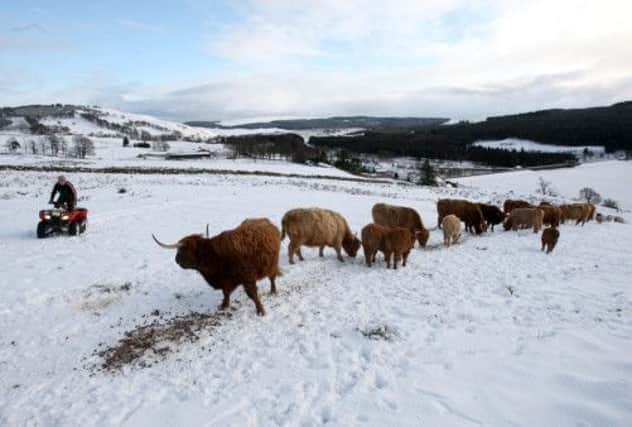Favours needed for less favoured areas


The union plan is to change the less favoured areas support scheme (LFASS) to allow those currently locked out of support an earlier route to vital funds. The union also claims the move would ensure that the LFASS cash was focussed on those actively keeping breeding stock.
The union has already asked the Scottish Government to adjust the scheme, which delivers £65 million annually to those farming livestock in disadvantaged areas – the approach to the European Commission was to check that such a move was allowable under the present regulatory framework.
Advertisement
Hide AdAdvertisement
Hide Ad“We hope it agrees that identifying a process that will allow disadvantaged producers to gain LFASS payments in some of our most challenging regions is of real value,” the union said.
The payments, made under pillar two of the common agricultural policy (CAP), are a vital strand of rural development support in Scotland, where more than 85 per cent of the land mass comes under the less favoured area designation.
The original European plan was to combine changes in LFAs with a new set of designations – Areas of Natural Constraint (ANC) – under the next CAP, due to come into forcve in January 2015.
But fierce opposition to this plan by several member states, including France, saw that original timetable dropped and ANCs will not now make an appearance until 2017, leaving existing LFASS rules to apply until then.
In his letter to the commission, NFU Scotland president Nigel Miller said: “There are two spin-off benefits in the potential delay until 2017 of changing from the current LFAs designation to ANCs. Firstly, the continuity of retaining the existing support measures is welcome. Many Scottish farmers are comfortable with these and they will provide a level of certainty at a time when producers will also have to adapt to new area-based single farm payment and a reduced pillar one [direct payment] to accompany it.
“Secondly, there is a window in which to re-base the scheme so that we capture those active livestock keepers who merit inclusion but are currently locked out of LFASS.”
Miller explained the present scheme has a historic basis, with eligibility being defined by keeping suckler herds or breeding sheep during the 2009 base year. “That historic gateway to support has created anomalies that lock out new entrants from receiving LFASS payments and also excludes farm businesses which operated non-eligible enterprises during 2009 but now keep suckler cows or keep breeding sheep,” he said.
The fact that a significant number of farmers in Scotland’s LFAs now operate identical farming systems and face the same physical disadvantages as their neighbours but cannot access vital rural development support because of the historic anchor within the LFASS was basically unfair, he said.
Advertisement
Hide AdAdvertisement
Hide AdThat situation could easily be changed, Miller claimed, by moving to a new base year of 2012, and looking at the livestock kept by all farmers in the LFAs that year.
“With the extension of the present LFASS arrangements to perhaps 2017, the injustices of historic eligibility have become more acute and require an urgent solution,” he concluded.